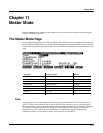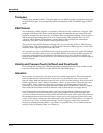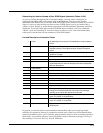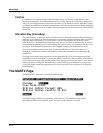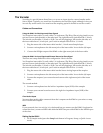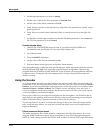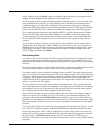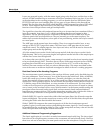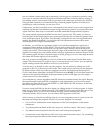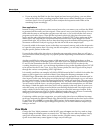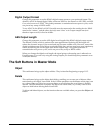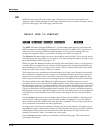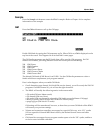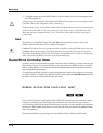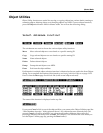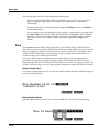
Master Mode
The MAST2 Page
11-9
just as a timbral control can be just as interesting. You can get very expressive results by using
your voice to control a lead line, doing the articulation and filter control by talking, singing, or
just making various vocal sounds. You can get some of the same types of results you would by
using a breath controller. It’s a little like having a 24-band graphic equalizer, but instead of
controlling it with your hands, you use your voice.
Furthermore, you don't even have to use a microphone as the master. You can send a signal from
anything else that has varied timbral content and get interesting results. For example, the master
signal could be a drum loop or some other recorded sound that changes timbres regularly.
The analog sample inputs on the K2661 are line level, not mic level. This means you have to
boost the gain on the sample page to get a good signal. But this also increases the general noise
level of the input signal. If you have a mic preamp, or plug the mic into a mixing board before
sending the signal to the K2661, you can lower the Gain parameter and start with a much
cleaner signal. This is highly recommended.
In addition, you will find you get better results if you run the preamped mic signal into a
compressor before sending it to the K2661. This can also be done for the slave signal. Using
compressors will give you a much more even dynamic result, making it easier to play and
control your sound. This is because the dynamic range of the master and slave signals is added
together. For example, let’s say both the master and slave signals have a dynamic range of 20 dB.
The resulting signal will have a dynamic range of 40 dB, giving you a very wide range between
the softest and loudest signals you can produce.
One way to improve intelligibility is to mix in a little of the master signal into the final audio
output. This can be done in a couple of ways. If you run the mic into a mixer, you can split the
signal, sending it both to the K2661 as well as to your final mix.
A second way is to include it in the vocoder program. You can do this by editing one of the
programs in the 22- or 20-band vocoder setups. You would want to add a layer to the program
(it doesn't matter which one of the two programs you edit). Set the Keymap for the layer to
LiveIn L and choose Algorithm 1 with the DSP function set to NONE. You could then control the
amount of the signal by editing the Adjust parameter on the F4 AMP page (or even assign a
control source to vary the amount).
You could then try various algorithms and DSP functions to further modify the signal. Running
the signal through a high pass DSP to emphasize vocal articulations is one obvious example.
Just make sure that you don't use the SHAPE 2 or AMP MOD OSC DSP functions. In that case,
the master signal won't be output.
If you are using the K2661 for the slave signal, try editing the slave vocoder program. A simple
thing to try is to choose a different keymap. The AMPENV in this program has been set to User,
with a lengthy decay, so you can even choose decaying sounds such as guitar, and get
interesting results. And of course, you can choose other programs as the slave.
And of course, you should try making some of your own programs to use as a source. Just edit
the setup and change the program in zone 3 to your new program. For example:
• Use an LFO to modulate the center frequencies of the slave bandpasses, or the master
bandpasses.
• Try panning alternate bands of the slave layers to L and R to create a “fake stereo” program.
• Try different center frequencies from the ones used in the preset programs.
• Currently the center frequencies of the slave layers match the master layers. Try scrambling
the slave frequencies relative to the master frequencies.



